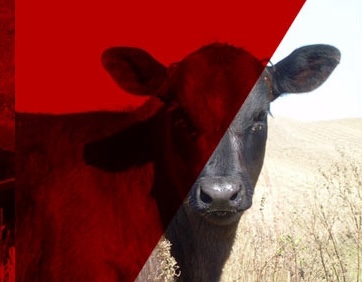Labor is tight, and input costs aren’t getting any cheaper. If you’re looking for ways to stretch your forage further, virtual fencing (VF) might be a tool worth adding to your operation. These GPS-enabled collars allow you to create or move paddock boundaries from your phone or computer. No posts, no reels, no fence to drag across the pasture. That makes it easier to rotate cattle more frequently, adjust grazing patterns on the fly, and make better use of your existing forage without adding to your workload.
So how does it work?
Each cow wears a collar that gives a cue, usually a sound, when they approach a virtual boundary. If they continue toward the boundary, they receive a mild electric pulse or vibration. After a short training period, most cattle adapt well and respond to the stimuli without needing a physical fence. The collars also provide GPS tracking data, so you can monitor where your cattle are and how much they’re moving. You can even use this data to flag animals that might be calving or sick based on changes in activity. A few weeks ago, we were getting ready to move a group and noticed (from our phone-app) one cow wasn’t with the rest. Her movement pattern showed she’d been traveling about half as much as the others. Sure enough, she had a split hoof and needed a bit of doctoring.
Whether you’ve already been using rotational grazing or are just starting to explore more intensive management, VF can help you take grazing to the next level. It gives you more flexibility and control. You can rotationally graze areas that are difficult to fence, prevent overgrazing in problem spots, or force cattle to graze areas they usually avoid. If you have streams in your pasture and want to protect the banks from erosion, VF can allow you to give limited access without having to maintain water gaps. For those that rent pasture, being able to increase grazing management without investing in additional infrastructure can be a real win.
Because you’re not physically moving fence, you can adjust your grazing plan quickly to match forage conditions, or weather. Is rain coming? You might fence cattle out of a low-lying area to keep it from getting torn up. Recently, we tested whether we could keep two herds in the same pasture apart only using VF, and it worked. This could allow you to split herds based on nutritional needs, such as running a lead-and-follow system where thin or young cows graze through a paddock first and are followed by the rest of the herd.
Choosing the right VF system takes some thought
One consideration is signal coverage. Some systems rely on cellular networks, while others use radio frequencies and towers. Your terrain and location will determine which works best. Towers can work in locations without a cell signal, but they do need line of sight, and hilly areas can make it challenging to map out your coverage. The good news with cellular systems is that you don’t need strong service. If you can send a text, the collars will work most of the time, even in areas where you can’t reliably make a call. And the collars don’t need to be connected at all times. They just need to communicate with the cellular servers when it’s time to send data or receive updates, like moving a paddock or changing a boundary.
The size of the herd will also impact which option is a better fit. Tower-based systems often require a significant upfront investment for the towers while “leasing out” the collars, so they tend to make the most sense when spread out over a large number of cattle. Cellular-based systems can come either with a monthly fee, or an upfront fee charged per collar, which can be a better fit for smaller herds.
Battery life is another factor. Some collars are solar-powered, while others rely on rechargeable batteries that last from a few weeks to a few months. If you’re doing frequent moves, like strip grazing or using smaller paddocks, cattle will interact with the boundaries more often, which increases battery use. In those cases, solar-powered collars can offer a real advantage by self-recharging in the field.
Ease of use also matters. Some systems have simple, user-friendly apps that are easy to learn. Others may take more time to set up and manage. Trying a demo can help you decide what fits your management style.
Think about the scale of your operation as well. Some systems offer higher GPS accuracy, which is important for smaller paddocks or intensive grazing setups. Others are built for managing large pastures and big herds where that level of precision isn’t as critical.
Finally, consider the cost structure. Some companies offer rental options for the collars themselves, which can reduce upfront costs to an extent. Others require full purchase but may offer lower per-collar costs over a longer contract term.
Conclusion
If you’ve been thinking about grazing more intensively but haven’t had the time or labor to make it work, virtual fencing might be the tool that makes it possible. It gives you more control with less effort and helps you get more from the forage you already have.
Bonus reading if you're on the techy side – read our previous article, which takes a deeper dive into how the system works. technical-note-where-are-my-cattle-part-ii-virtual-fencing/
Want to learn more about virtual fence products available? In December of 2024, Nebraska Extension hosted a virtual trade show where several virtual fence companies presented information about their products and services. These companies also had clients talk about their experience with the product. To view a recording of the tradeshow, visit https://go.unl.edu/virtual_fence.

